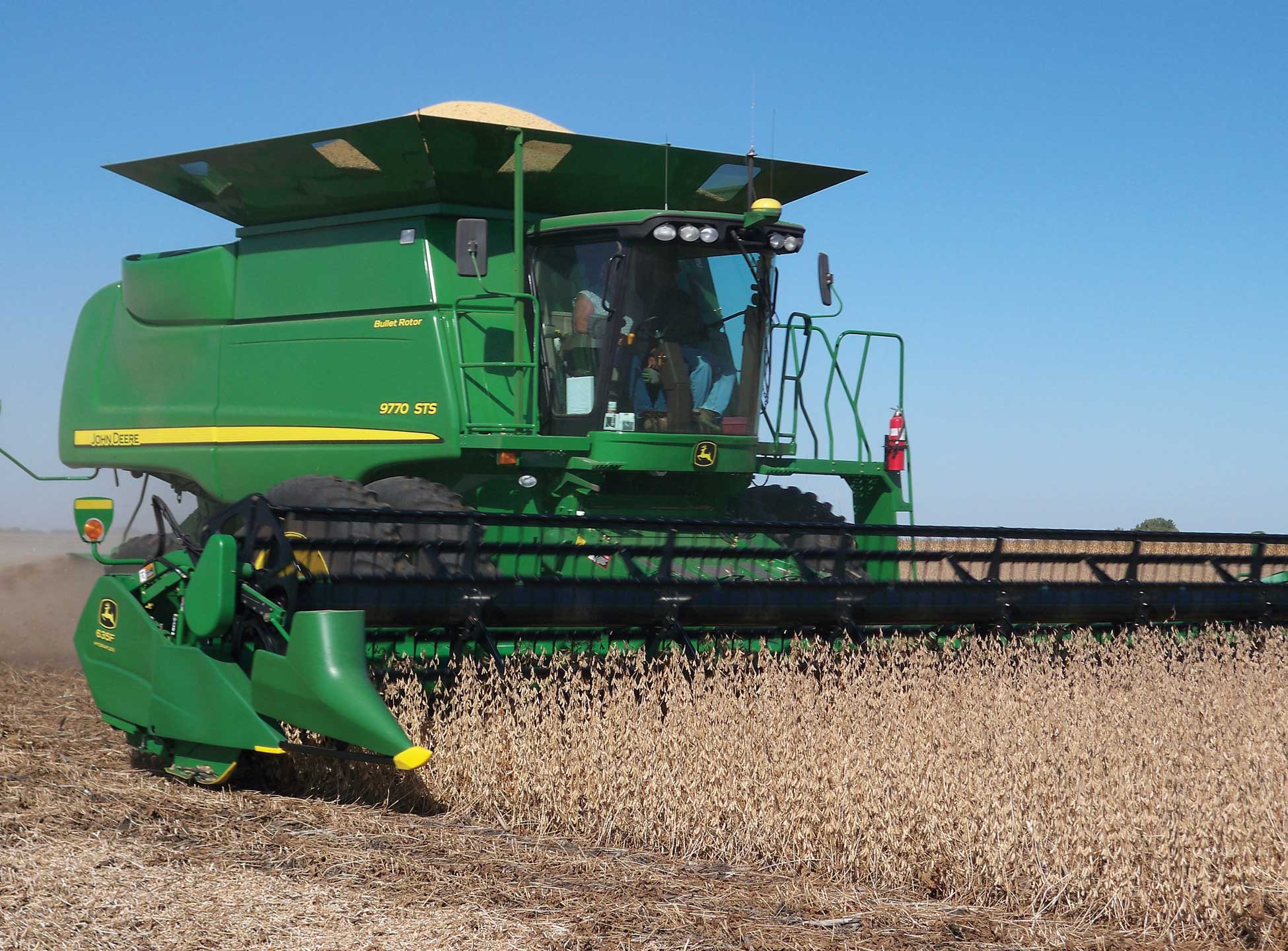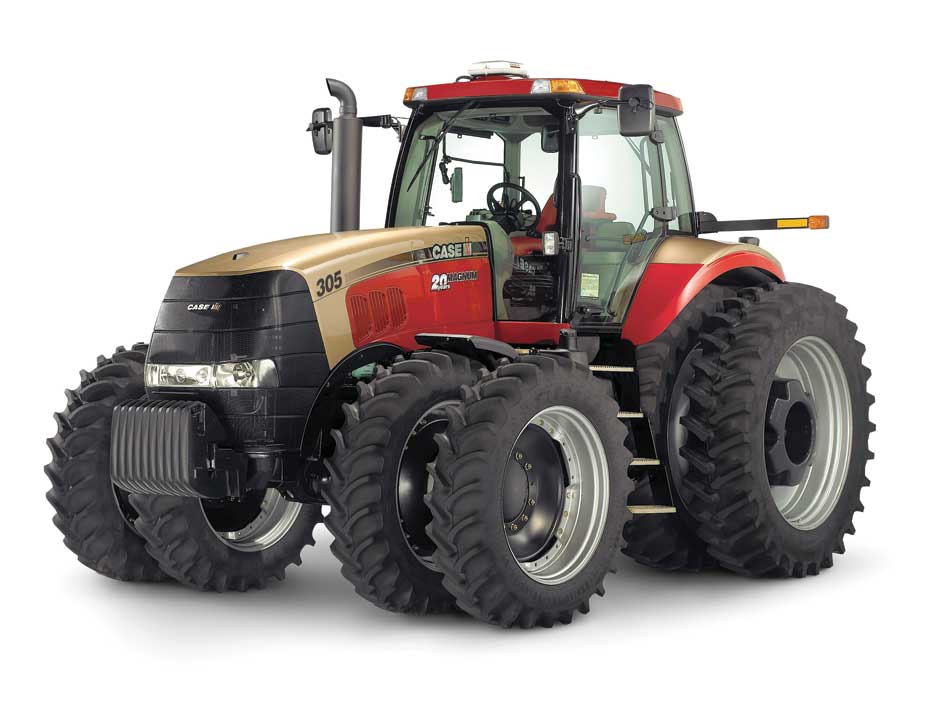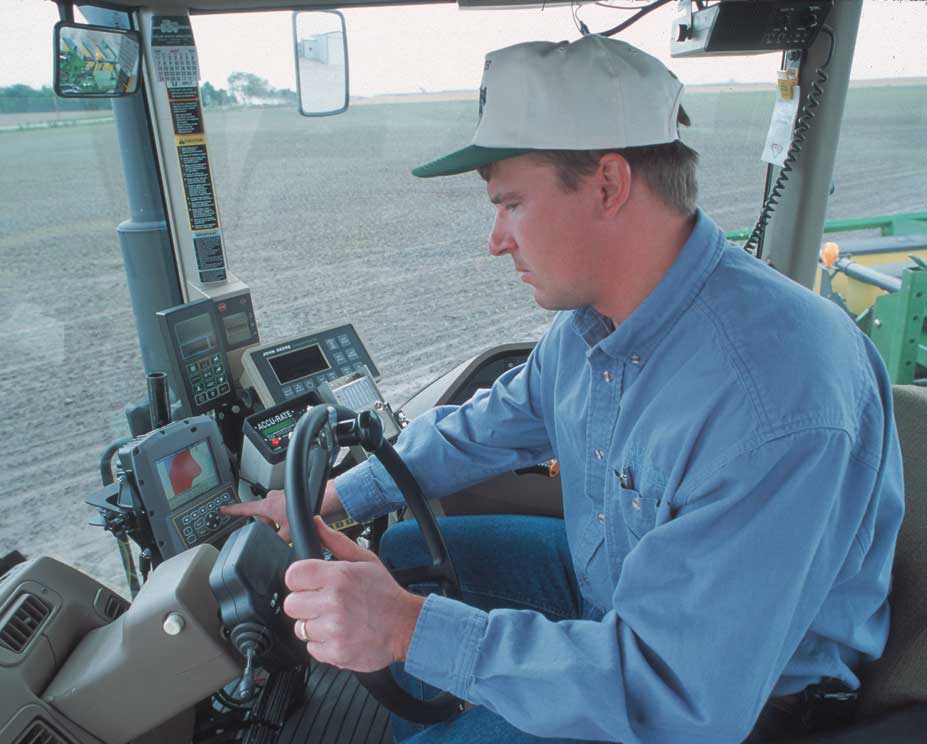TechnologyThe use of tools refers to the use of tools. By using technology, people can somewhat control their environment. Technology use began by making simple tools out of natural resources. For example, wooden sticks were used as digging tools, and bison bones became garden hoes.
Modern technology has increased farm production significantly. In 1900, an average farmer with a team of horses could produce enough food for about seven people. Today, an average farmer can produce enough food for approximately 155 people.
Tractors and other farm machinery often come to mind when thinking about tools used in farming. Modern-day farmers, however, also rely on electronic technology.

Figure 146. Modern combines help North Dakota farmers produce much of the world’s food supply. This John Deere combine is harvesting a field of soybeans. (John Deere, Inc.)

Figure 147. This Case-IH tractor is an example of the modern machinery used by North Dakota farmers. (Case-IH Corporation)
Computers can be used to record farm income and expenses, to check crop prices, and to keep track of supplies. Computers are also mounted on certain types of machinery for use with GPS.
GPS• Global Positioning System
• Uses satellites to determine positions on the earth stands for “Global Positioning System.” GPS consists of a series of satellites that are orbiting (circling) the earth. They are about 12,500 miles above the surface of the earth. Each satellite weighs about 1,700 pounds. It takes 12 hours for each satellite to orbit the earth once.
As the satellites circle the earth, they are sending back signals. These signals can be monitored by anyone with a GPS receiver.
GPS receivers are often mounted on tractors and are used to map out exact conditions of the fields. This information helps determine how much seed, fertilizer, or weed spray should be used in each area. GPS can also be used to steer tractors so that areas of a field are not overlapped.

Figure 148. GPS information is used by North Dakota farmers to determine how much fertilizer or weed spray should be applied to an area. (USDA)
The farming business today is very complex, and farmers need to be well educated. The North Dakota State University (NDSU) Extension Service offers a variety of classes for farmers throughout the state.
Private companies also provide education and services when farmers purchase their products. An example is Agri ImaGIS Technologies. This North Dakota company is based in Maddock. The business specializes in helping farmers with GPS and other computer technology.


